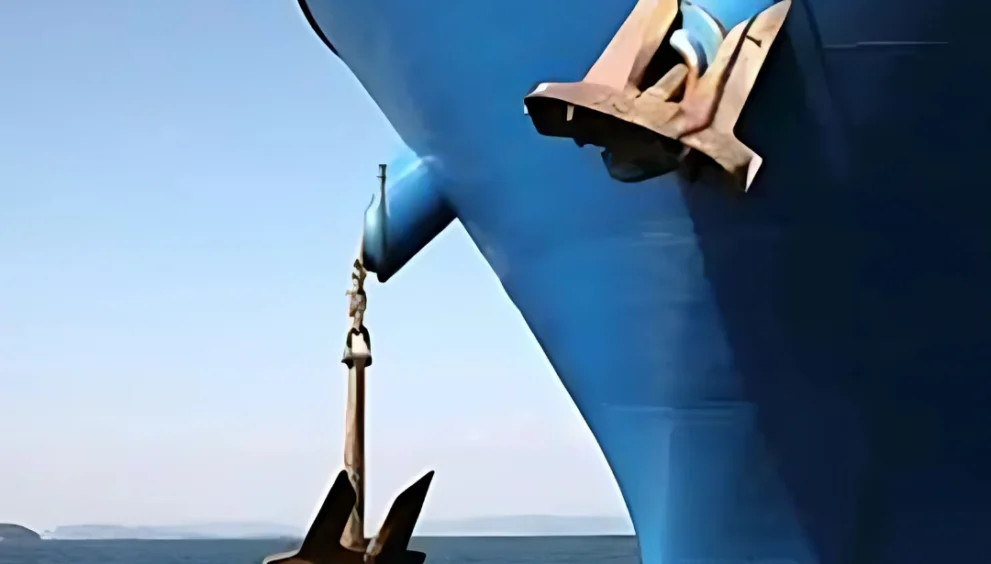Anchor Dragging: Outsmarting the Silent Threat
Anchor dragging isn’t loud, but it can be deadly. Whether you’re navigating congested anchorages or weathering rough seas, the anchor is your ship’s only grip on the seabed. But what happens when that grip slips?
Understanding anchor dragging goes beyond textbooks. It’s about decoding subtle clues, thinking ahead, and mastering the tools you already have on board.
Let’s break it down for smart seafarers who want more than just the basics.
What Exactly is Anchor Dragging?
Anchor dragging is when the anchor fails to hold its position on the seabed, causing the vessel to drift. This could mean a slow creep or a dangerous surge, depending on sea conditions and how aware you are of what’s happening under the waterline.
But most importantly—dragging isn’t always obvious. And if you wait for the GPS alarm, you might already be in trouble.
Core Causes of Dragging
Let’s cut the noise. These are the true culprits:
-Inadequate Scope
Less chain = steeper pull = poor holding. Aim for a minimum 5:1 ratio in calm conditions, and increase with depth or wind.
-Poor Seabed Compatibility
Some seabeds like loose gravel or compact mud can cause slipping. Seabed type determines holding—use all onboard tools to assess.
-Incorrect Setting Technique
Releasing the anchor while still making way results in poor embedment. You need to stop the ship and walk the chain out. Controlled tension ensures a proper set.
-Wind and Current Shifts
An anchor that held under one vector may break free when the load shifts direction. Stay proactive with weather monitoring, especially during tidal transitions.
-Mechanical Shortcomings
Weak brakes, sluggish windlass, or fouled chain can make the anchor misbehave. Pre-checks matter more than most realize.
-Professional Grade Tips to Prevent Dragging
Forget the generic advice. These are technical tactics that experienced watchkeepers actually use:
Watch how the chain lays. A shallow angle means the anchor is holding; steep angles under tension suggest dragging or poor set. Visually tracking chain angle is faster than waiting for alarms.
Use radar to mark three fixed targets. If bearings shift beyond tolerance, dragging has started. This method beats single-point GPS monitoring.
Once the anchor is dropped, engage astern power slowly. If the anchor resists movement with a consistent load, it’s likely set. If it skids or the load fluctuates, reset immediately.
In high-wind situations, consider spreading the load between two anchors at 45° to 60°. This increases holding power and minimizes veering.
Use them, but don’t trust them blindly. A smart OOW uses visual cues, radar trends, and chain response for real-time feedback.
In deteriorating conditions, tighten anchor watch cycles. Reactiveness isn’t enough—you need anticipation. Keep one hand on the throttle, metaphorically and literally.
What Most Don’t Tell You About Dragging
False Holding Exists
The anchor might “feel” set but is actually resting on compact mud or loose gravel. Only after load increases does it fail. That’s why post-drop tension tests are vital.
Seabed Mapping Tools Are Underused
Use your echo sounder in “bottom hardness” mode if available. Chart info isn’t always recent—dynamic conditions change the seabed more often than you’d think.
Dragging Can Be Masked by Wind Drift
If the wind and ship are aligned, you might be dragging with the wind—making it hard to detect visually. Hence the importance of multi-point radar fix monitoring.
Final Word
Anchor dragging isn’t always the result of bad seamanship. But outsmarting it always comes down to good seamanship.
Know your anchor. Know your seabed. Know your surroundings.
Because when the wind picks up and the ship starts yawing, the difference between a solid hold and a drifting vessel isn’t luck—it’s how smart you were when you dropped the hook.








